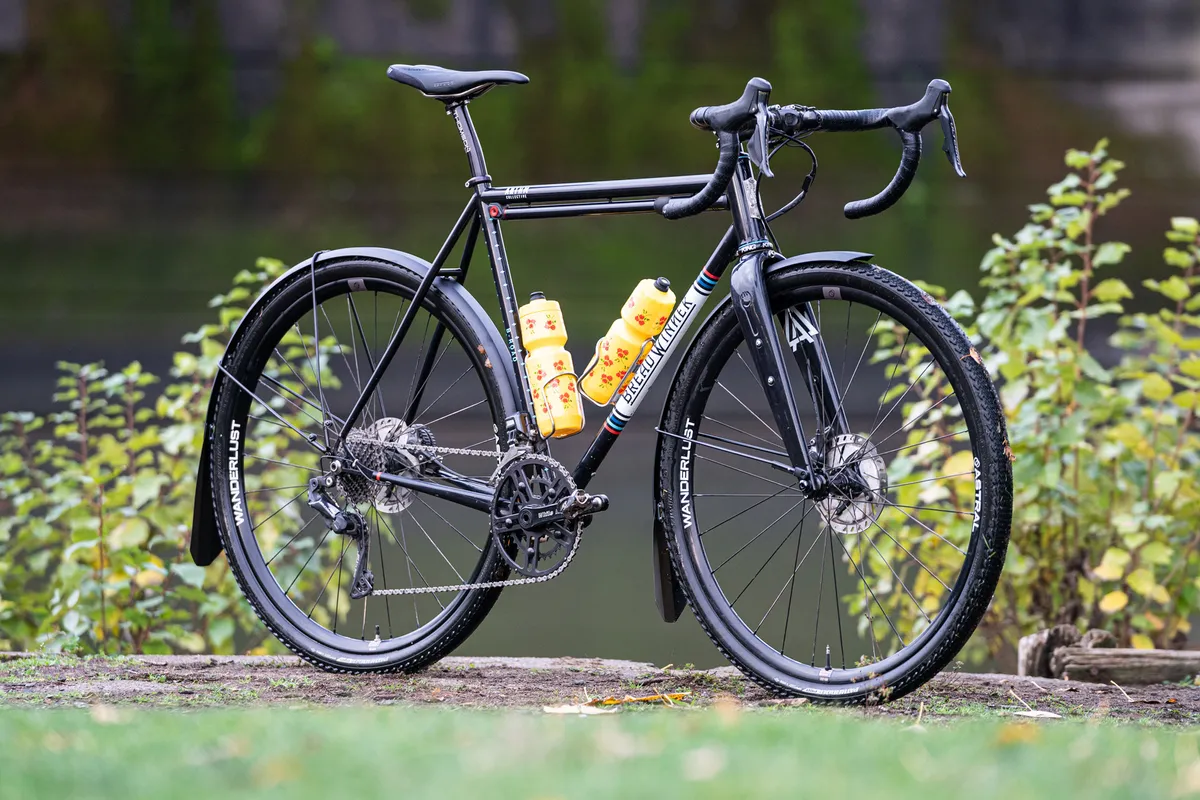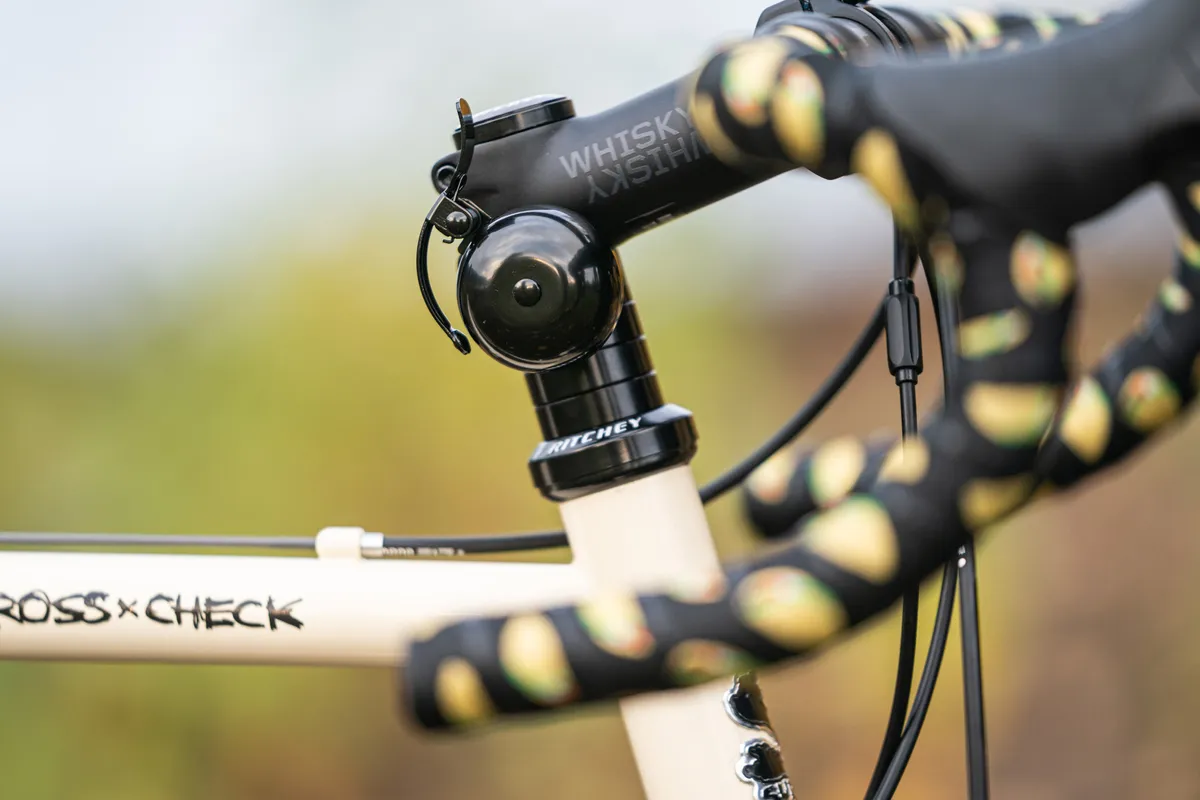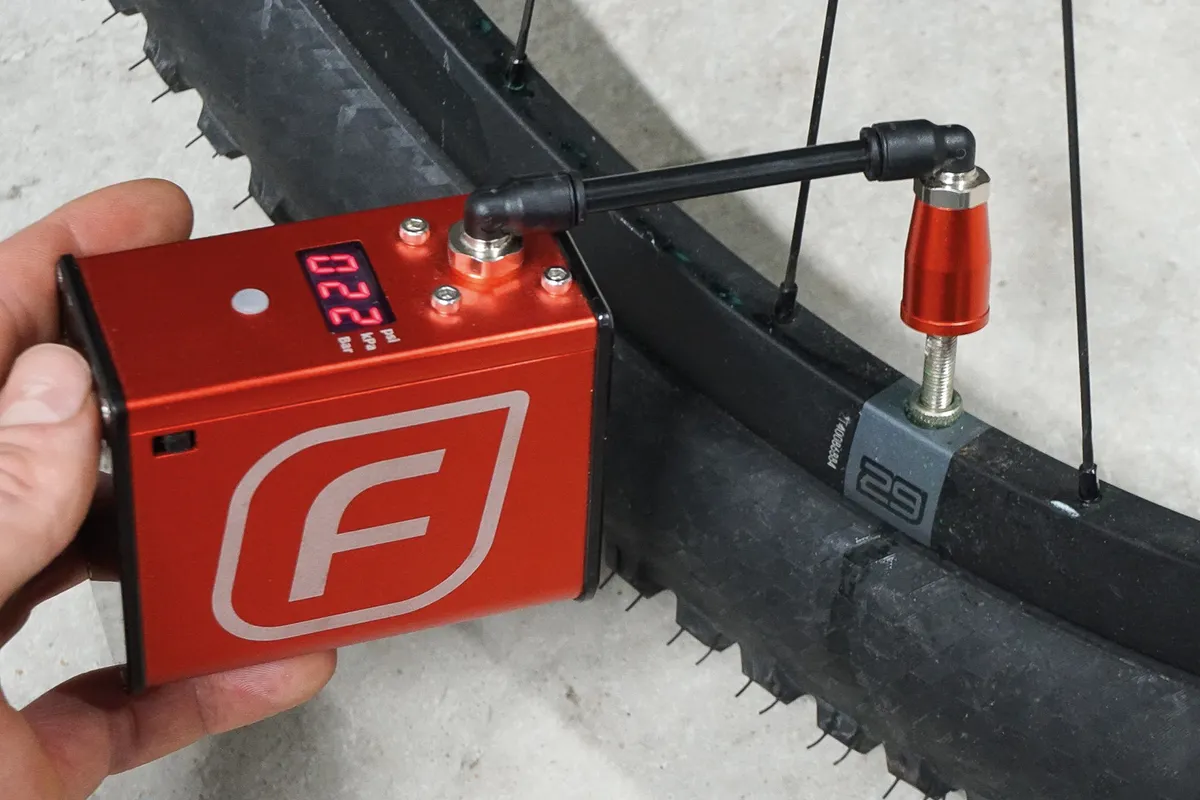It comes as no surprise that gravel riding and adventure cycling have really boomed in popularity over recent years, taking cycling off increasingly hectic roads and enabling riders to explore exciting new terrain.
Alongside the major bike brands releasing gravel bikes as part of their line-ups, component and accessory manufacturers have also been working to develop new products that cater to the demands of mixed-terrain riding.
Here’s our round-up of the most useful gravel bike accessories, designed to enhance your ride, whether that’s helping you navigate new trails, protecting you and your bike, stowing your kit, preventing mechanicals or just enabling you to ride further in more comfort.
- Read more: Best gravel bikes in 2025: top-rated carbon, aluminium, titanium and steel gravel bikes reviewed
Mudguards

There’s no denying that gravel riding, especially in the winter and wet-weather conditions, can be a filthy game.
Gravel bike mudguards help to not only keep you cleaner and drier, but can also help to prolong the life of your components. There’s less of an emphasis here on keeping your ride pals dry than on the road, because you tend to ride further apart rather than in a tight peloton.

There are multiple options on offer here, from traditional, fixed guards in wider widths to universal, clip-on options such as the Mudhugger Rear GravelHugger or more minimalist RideGuards.
Having a decent level of clearance between the tyre and mudguard is really important, to prevent any clogging with mud or debris, which can be damaging or dangerous to you and your bike.
GPS bike computer

When it comes to heading off-road, route planning becomes even more important.
If you’ve researched a route in advance of heading out, or are following a route from a friend, having an easy way to navigate without having to reach into your pocket for a phone or paper map at every junction is really handy.
The best GPS bike computers really excel here, helping you focus on keeping the pedals turning with turn-by-turn navigation. Models such as the Wahoo Elemnt Roam V3, Hammerhead Karoo 3 and Garmin Edge 1050 have large colour screens, which make navigating at a glance easy too.
Alternatively, you could use a bar-mounted phone holder and a cycling app such as Komoot to navigate.
Bell

More often reserved for commuter bikes or hybrid bikes, a handlebar-mounted bike bell can be a really wise idea if you spend some of your gravel rides on shared-use paths.
Giving pedestrians and other trail users a friendly warning ‘ding’ can help alert them to your presence from a distance away.
From small, minimalist ringers to more stylish metallic options, you’ll be sure to find one to suit you.
Frame protection

There’s no debating it, riding off-road can be tough on your bike. Flying stone chips, banging gates, rubbing bikepacking bags, layers of sand, mud and filth: gravel riding can wreak havoc with your bike’s paintjob.
This is where frame protection comes in. Choose from all-over kits made for your bike’s model, such as those from Invisiframe, or smaller, area-specific patches to protect the chainstay, under the down tube and where cables could rub.
It’s also a really good idea to protect areas of your frame where bikepacking bags attach or come into contact, such as the head tube, seatpost and top tube.
Most kits are transparent, although you could add a little jazz to your build with patterned alternatives.
Tyre inserts

If you find yourself frequently testing the limits of your gravel bike’s technical capability, and are yearning to be able to take the tyre pressures down further without risking damage to your wheels, then tyre inserts could be right up your street.
These foam hoops fit into a tubeless tyre setup just as an inner tube would, absorbing any impacts. This protects the rim, eliminating the risk of pinch flats and reducing tyre burping, enabling you to run lower tyre pressures.
This comes from the mountain biking world, where MTB tyre inserts are pretty well-known, although it's still a fairly new technology.
Clip-on handlebars

One of the really great things about the gravel world is the experimentation in product design. Perhaps it’s the lack of UCI rules – watch this space – or perhaps the fact that there’s a greater emphasis on exploration rather than only speed.
Handlebars are just one area where this really manifests. Flared bars and designs such as the Full Mounty bar on the Canyon Grizl Escape, enable you to add even more luggage, while keeping your bar tops free, or just give your hands a rest with their extra position and the option to add extensions.

In fact, for gravel riders intent on covering big distances, clip-on aero bars are a popular option.
You may see time-trial-esque extensions used for some races, such as Unbound Gravel.
These give good aerodynamic and comfort benefits over long-distance courses, but they’re not generally recommended for day-to-day gravel riding: in the extensions, you’re a long way from the brakes, and they’re only really suitable for smooth gravel roads.
Bike bags

There’s an enormous range of luggage to choose from when it comes to carrying kit on your gravel rides, whether that’s on your bike or on your person.
Smaller bags for day rides include tool rolls that you can fit neatly under a saddle, stem pouches that provide easy access while you’re riding, handlebar bags and half-frame packs that can stow extra layers or snacks, and hip packs.
For longer-haul trips where you need to take more kit and camping gear, consider bikepacking bags such as a handlebar roll, full frame bag or seatpost bag.
Pedals

While pedals fall under 'essential' rather than 'accessory', don’t forget that if you’re buying a new gravel bike, you’ll probably need to purchase some pedals too.
Pedal preference is personal, with flat pedals, double-sided MTB-style pedals or the halfway-house of trail pedals, featuring a clipless system surrounded by a supportive platform, all popular with gravel riders.
Check out our full guide to the best gravel bike pedals, or read up on flat pedals vs clipless pedals.
High-volume tyre pump

Although this falls more into the realms of tools and spares, rather than accessories, a high-volume tyre pump is a worthwhile investment if you’re new to gravel riding.
Unlike road cycling pumps that are optimised for high pressure, these chunkier mini pumps are better suited to higher-volume, lower-pressure gravel tyres and mountain bike tyres.
Unlike a CO2 inflator, which you can only deploy once, you can use the best bike pumps over and over again. Although often a little weighty or bulky, a pump can save your ride, or help out a friend in need.

Alternatively, check out the latest electric bike pumps, which take the drudgery out of reinflation. They're a little more expensive than most hand pumps, but may not weigh a lot more and are more compact, while many can inflate multiple tyres on a single charge.
While we're talking tools and spares, if you're running tubeless tyres, a tubeless repair kit, such as the Stan’s NoTubes DART, is a smart idea.
Suspension seatpost/stem/fork

Don't like being bumped around off-road? A suspension seatpost helps cushion your posterior from the continual vibration and the big hits. It will add weight, but that might be something you're prepared to live with in the gravel world, where for most riders a super-lightweight rig isn't so important.
Some dropper seatposts incorporate a little free travel when extended and, when dropped, can make bike handling easier on technical descents.
You can add extra front-end comfort, too, with a suspension stem, which is a relatively inexpensive upgrade.
Alternatively, many gravel bike frames are now designed so you can swap from a rigid fork to a short-travel gravel suspension fork. These typically have either 30mm or 40mm of tuneable travel to help keep your ride more comfortable, although like everything gravel they're getting larger – the RockShox Rudy XL has 50mm and 60mm travel options with 57.5mm tyre clearance.
Dynamo lighting

Planning to go long? Dynamo lighting may be a good upgrade to consider, providing plenty of illumination for off-road riding and enabling you to ride on through the night without worrying about your bike lights expiring.
Dynamos and dynamo lights have become much more sophisticated over the last few years. There are more options and they add little extra drag – only a few watts – when in use, and even less when your lights aren't lit.
Many gravel bikes have ports for internal wiring through the fork leg, to keep things tidy. Most modern dynamos can power up your cycling computer, phone or other kit via a USB port, too.
